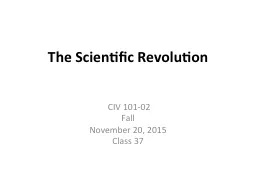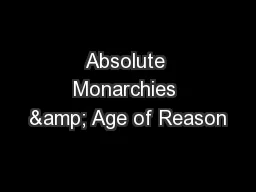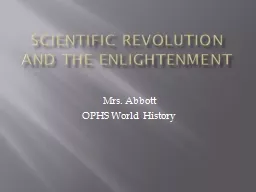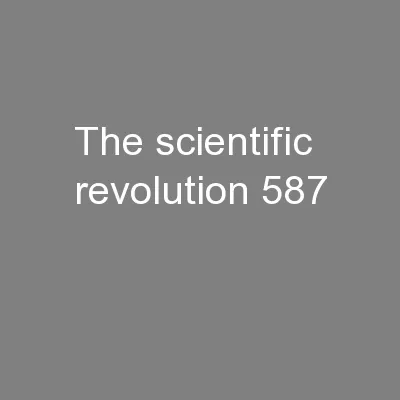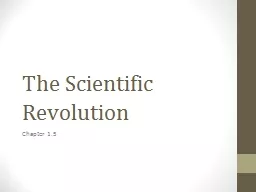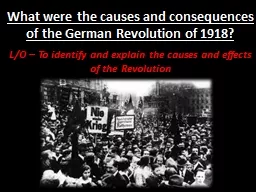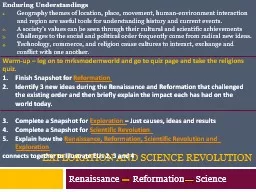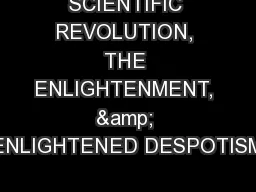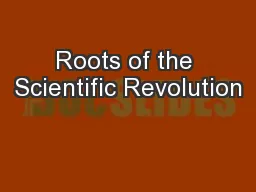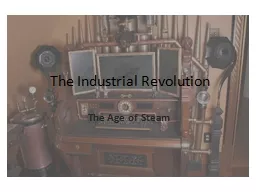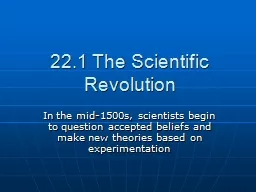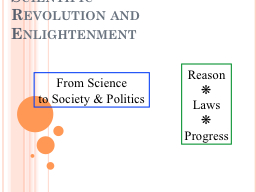PPT-The Scientific Revolution
Author : faustina-dinatale | Published Date : 2018-01-04
CIV 10102 Fall November 20 2015 Class 37 New Science Incomplete and approximate time lines 1514 Copernicus 1580 Bacon 1595 Kepler 1600 Galileo 1627 Descartes
Presentation Embed Code
Download Presentation
Download Presentation The PPT/PDF document "The Scientific Revolution" is the property of its rightful owner. Permission is granted to download and print the materials on this website for personal, non-commercial use only, and to display it on your personal computer provided you do not modify the materials and that you retain all copyright notices contained in the materials. By downloading content from our website, you accept the terms of this agreement.
The Scientific Revolution: Transcript
Download Rules Of Document
"The Scientific Revolution"The content belongs to its owner. You may download and print it for personal use, without modification, and keep all copyright notices. By downloading, you agree to these terms.
Related Documents

